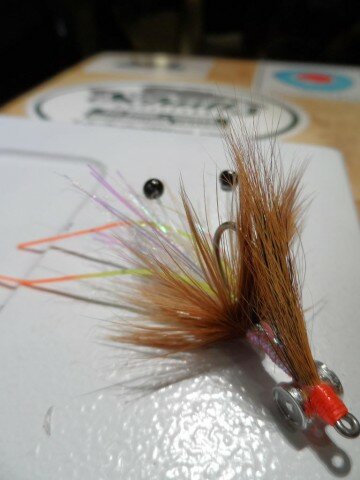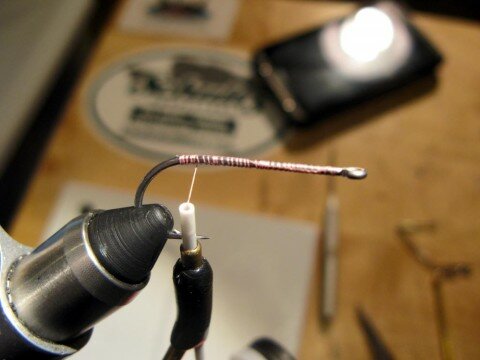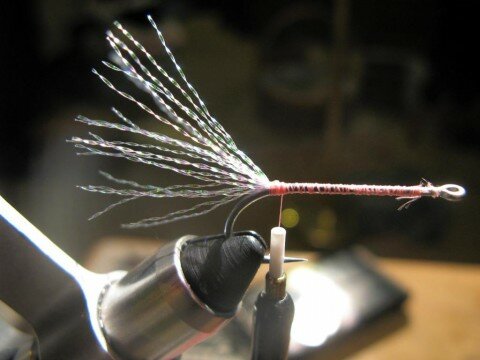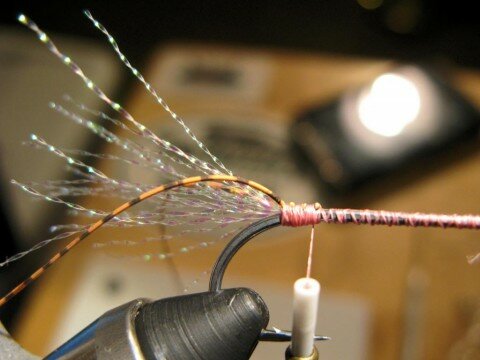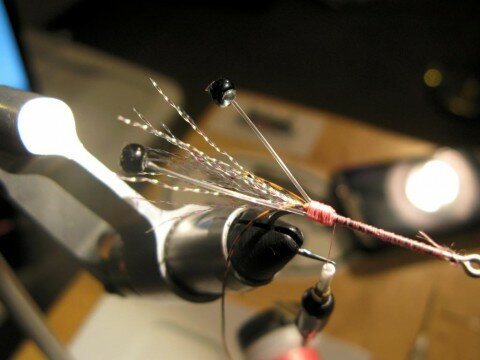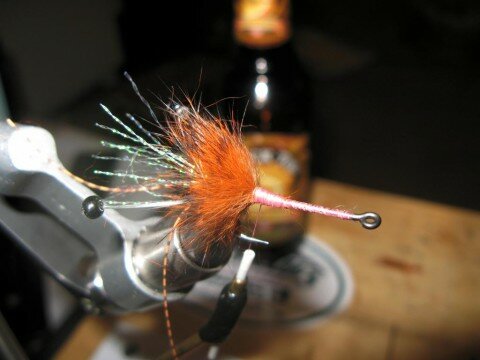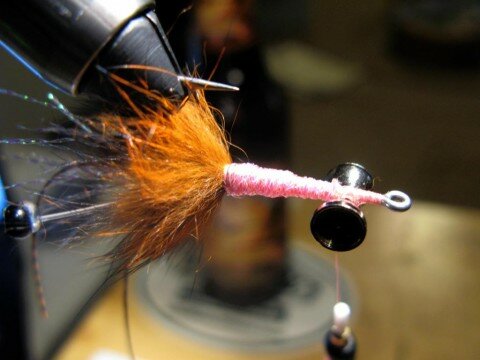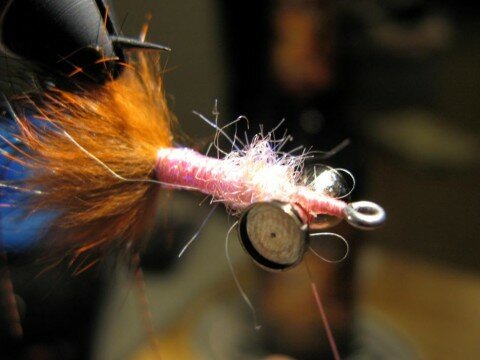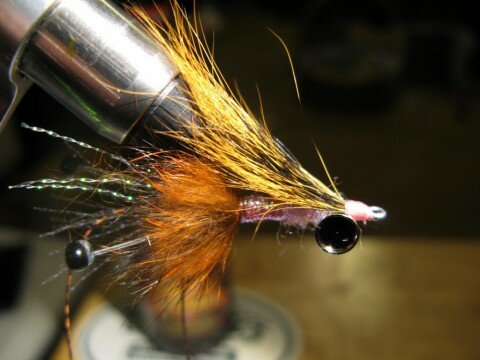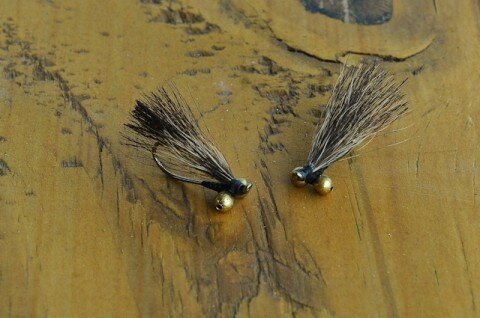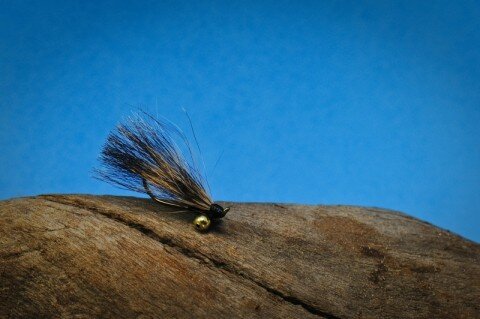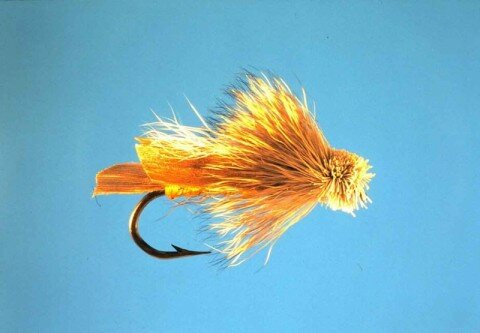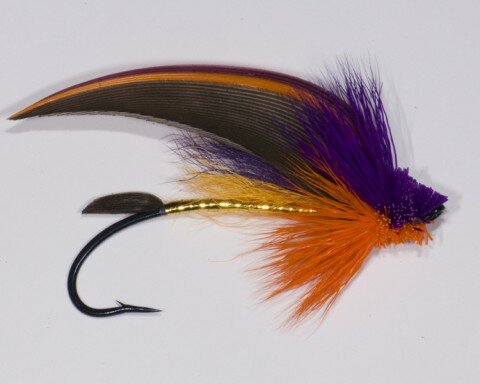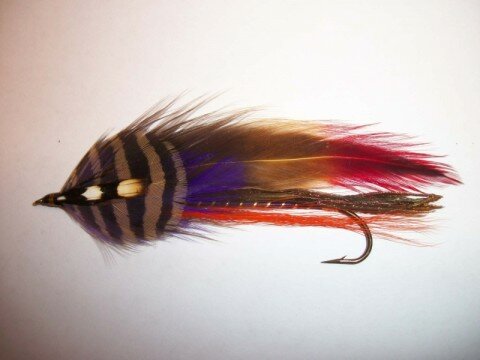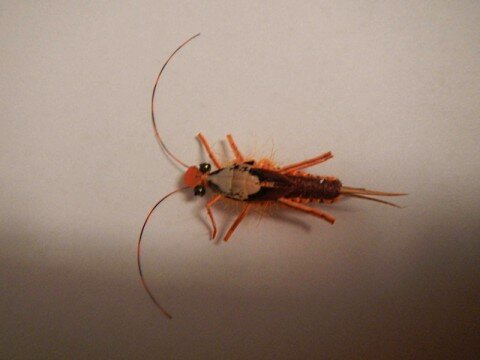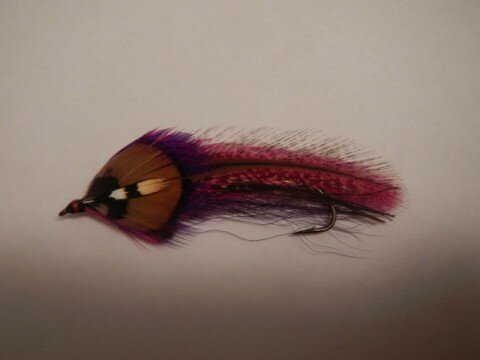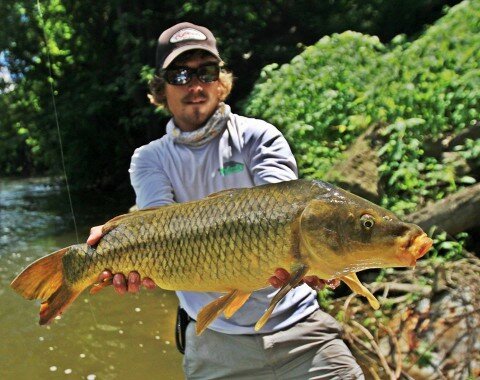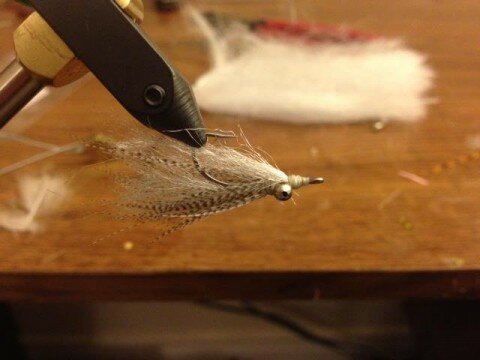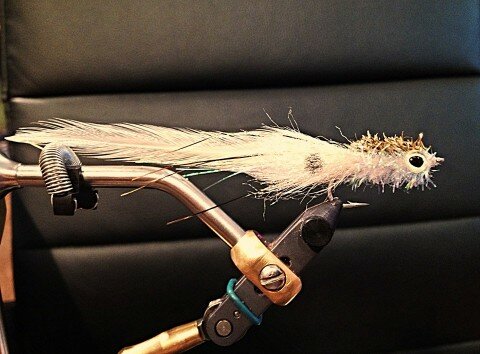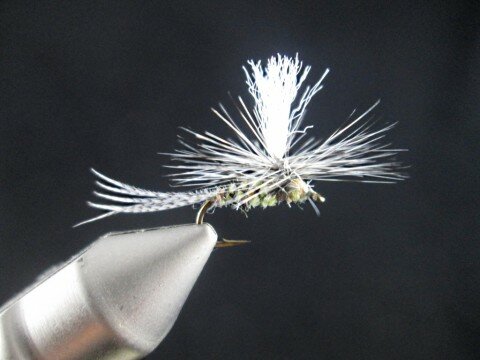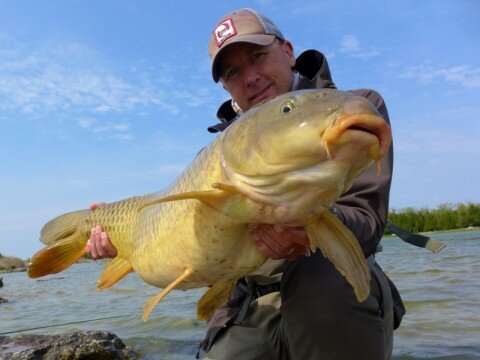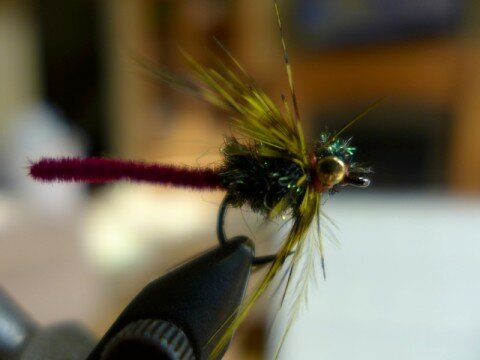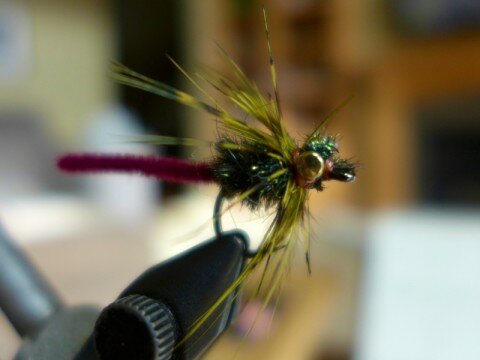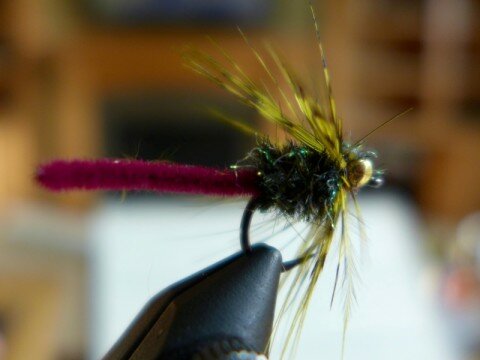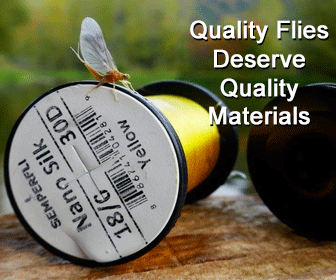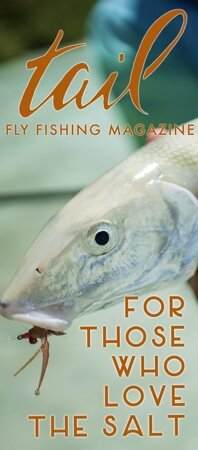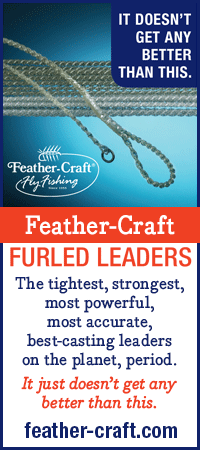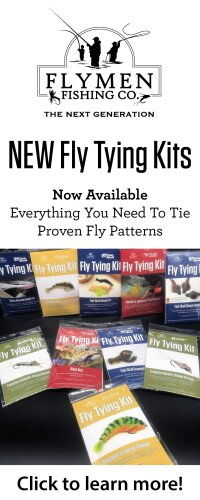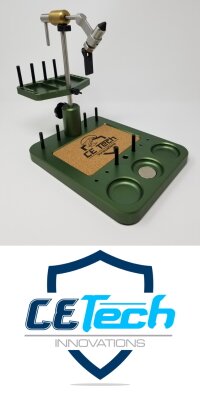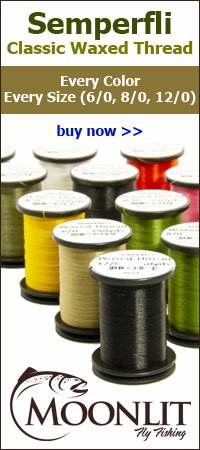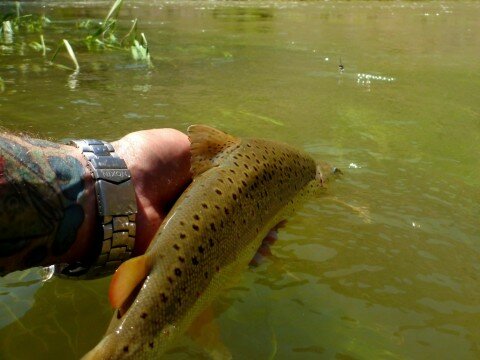
This Gunnison Gorge Brown found a heavy metal worm in less than a foot of visibility.
Idylwilde produces this fly in two sizes, 10 and 14. The original sizes were supposed to be called Iron Maiden (10, heavy metal) and Van Halen (14, sort of metal), but my original sizing didn’t make the cut. There was also going to be a large number 6, which would have been Slayer sized (very heavy metal), but the huge one didn’t make the cut either. The official color of this worm is red like most worms, but I also tie it in pink, purple, brown, and chartreuse as well.
Everyone knows how effective worms can be when rivers are high and dirty, I really liked the rubber band worm but I never liked how light it was. I’m typically fishing worms deep, when the river is high, so I like having a heavy worm that doesn’t require quite as much split shot to get the fly down. I also like to use the heavy metal worm as a weight fly. I’ll often set my beginning anglers with a double nymph rig as it’s an effective way to get beginners casting, drifting, and into fish early in a guide day. I’ll use one large, very heavy fly equally for it’s bugginess as it’s weight to drag down a more accurate imitation of a mayfly or a caddis that otherwise wouldn’t sink as effectively on its own.
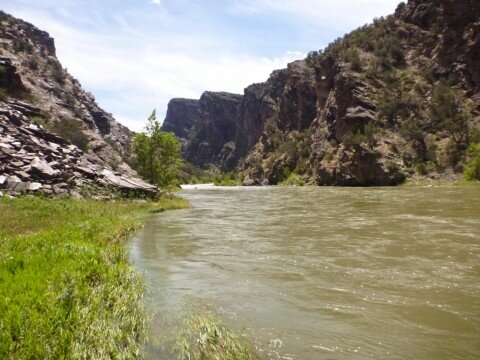
Blown River? Bring on the worms!
My go-to weight fly was typically a Jimmy Legs, but sometimes I liked to mix it up a little and throw a different heavy fly, that will stand out from what every other guide is throwing. I remember days on the Upper Gunnison River when there might be 15 guide boats on 10-15 miles of water and 13 of them were probably throwing Jimmy’s/Pat’s. I had many great days with the heavy metal worm as I think it stood out from the dozens of stonefly imitations being dragged down the river. It sinks as fast, if not faster, than a large stonefly nymph as it’s sparse and very dense.
Another situation when the worm really excels is when the river is dirty. A brightly colored, wiggly, worm stands out in a blown river. A few years back we had some high water trips through the Gunnison Gorge and as guides we joked about how we had to polish the turd that management handed us. Every other company was canceling trips and refunding their clients because the river was blown out. Things were not looking good and in hindsight our outfitter had probably spent his customer’s deposits before the trip had even gone down the river. So he just sent paying customers on muddy water fishing trips and as guides we had to get creative to scratch out a few fish a day. It’s pretty much basic 101-level fly fishing to throw a worm when the river is dirty, and on our high water Gunnison Gorge trips the heavy metal worm excelled.
I definitely didn’t reinvent the wheel with this fly. However I do feel like I took a good concept, the rubber band worm, and made it better.

SIZE:
Van Halen (14), Iron Maiden (10)
Material Specs:
Hook: TMC 2499 SPBL
Thread: UTC 70, Red
Tail: Two Strands Red Spanflex
Body: Red Ultra Wire, size M for 14, L for 10
Thorax: Quick Descent Dub, Red
Head: Faceted Tungsten Bead, Copper, 2.5mm for 14, 3.5mm for 10
Antennae: Two Strands Red Spanflex
Special Tying Instructions:
The first step with this fly is to pull the two strands of red spanflex through the bead and then put the bead on the hook. Then start your thread and tie down the antennas. Then tail, then body, then thorax. Also, I like to whip finish a couple times before dubbing the thorax and finishing with dubbed whip finish.

